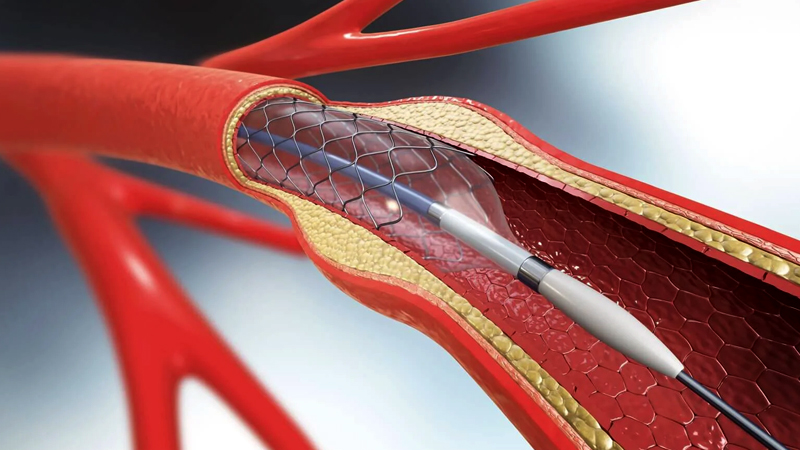
Stenting
Stenting is a medical procedure in which a small, hollow tube known as a stent is inserted into a blood vessel, duct, or hollow organ to provide support, keep it open, or redirect the flow of fluids. Stenting is commonly used in various medical specialties, including cardiology, gastroenterology, urology, and vascular surgery, to treat a wide range of conditions.
Here are some common applications of stenting in different medical fields:
Cardiology: In cardiology, stents are often used to treat coronary artery disease (CAD). During a procedure called percutaneous coronary intervention (PCI) or angioplasty, a stent is inserted into a narrowed or blocked coronary artery to open it up and restore blood flow to the heart muscle. Coronary stents can be made of metal (such as stainless steel or cobalt-chromium) or polymer and may be bare-metal stents or drug-eluting stents (coated with medication to help prevent restenosis, or re-narrowing, of the artery).
Gastroenterology: In gastroenterology, stents may be used to treat conditions such as strictures (narrowing) or blockages in the esophagus, stomach, bile ducts, or colon. For example, in patients with esophageal cancer or other conditions causing esophageal strictures, a stent can be inserted into the esophagus to help maintain patency and allow for easier swallowing. Similarly, stents can be placed in the bile ducts to relieve obstruction caused by tumors, gallstones, or other conditions.
Urology: In urology, stents are commonly used to treat urinary tract obstructions or blockages. For example, a ureteral stent may be inserted into the ureter (the tube that connects the kidney to the bladder) to bypass a blockage caused by kidney stones, tumors, or other factors. Ureteral stents are typically made of soft, flexible material (such as silicone or polyurethane) and are designed to allow urine to flow freely from the kidney to the bladder.
Vascular Surgery: In vascular surgery, stents are used to treat narrow or weakened blood vessels (arteries or veins) and improve blood flow. For example, stents may be inserted into peripheral arteries to treat peripheral artery disease (PAD) or into abdominal aortic aneurysms to prevent rupture. Stents used in vascular surgery are typically made of metal (such as nitinol) and may be self-expanding or balloon-expandable, depending on the specific application.
Stenting procedures are typically performed under local anesthesia or sedation, depending on the location and complexity of the procedure. While stenting can be an effective treatment option for many conditions, it may also carry risks, such as blood vessel injury, stent migration or blockage, allergic reactions, or infection. Therefore, it's important for patients to discuss the benefits, risks, and alternatives of stenting with their healthcare provider before undergoing the procedure.
